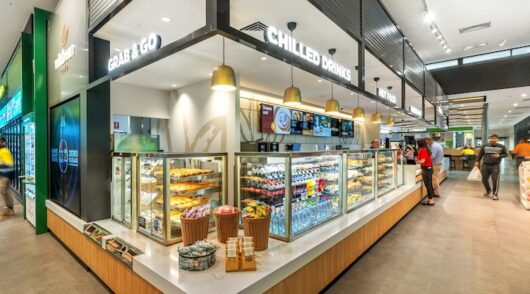Australia has emerged relatively unscathed from the latest wave of US tariff hikes, at least on the surface. As part of an executive order signed by President Donald Trump last Friday, the US has imposed new “reciprocal” tariffs ranging from 10 per cent to a punishing 55 per cent on imports from dozens of countries. While allies like Canada (35 per cent) and New Zealand (15 per cent) were hit with sharp increases, Australia maintained its baseline tariff rate of 10 per cent.
cent.
According to the Department of Foreign Affairs and Trade, “Most goods originating in Australia are subject to this tariff on import into the US. Some goods are subject to a higher tariff rate, while others are exempt”.
In an interview with Reuters, Trade Minister Don Farrell emphasised that the lower rate gives Australian exporters a competitive edge in the US market.
“What this decision means in conjunction with all of the other changes to other countries is that Australian products are now more competitive in the American market,” he said.
However, for retailers, manufacturers and importers, the detail is more complicated than a single headline rate, according to logistics strategist Lyn Nguyen.
“This is a welcome relief for local manufacturers,” Nguyen, founder and director of Auvie Consultants, told Inside Retail.
“It means that goods made in Australia will only incur a 10 per cent tariff when entering the US market, a significantly better outcome than the steeper tariffs previously threatened,” she said.
Nguyen noted that for brands producing onshore, this secures essential access to one of Australia’s most important export markets without eroding already compact margins. But for businesses relying on offshore production, the story is very different.
With Chinese exports to the US currently attracting a minimum 30 per cent tariff, down from earlier threats of 145 per cent, Australian retailers producing offshore must factor in significantly higher landed costs. For many, this will test the viability of long-held sourcing strategies.
“As these tariff differences increase, some businesses may explore reshoring part of their manufacturing to Australia,” Nguyen explained.
“As long as substantial transformation occurs locally, even if raw materials are sourced from abroad, the product can still qualify as Australian-made under current rules of origin,” she added.
This can be considered a subtle but powerful distinction. With tariff pressures rising and consumer price sensitivity unlikely to fade, manufacturing location decisions may hinge less on cost alone and more on strategic flexibility and market access.
“At the current [minimum] 30 per cent rate, China remains viable for many businesses due to cost advantages and established infrastructure,” said Nguyen.
“But if US tariffs on Chinese goods rise again, we’re likely to see shifts in supply chain strategy, whether that’s bringing production home or diversifying into other countries with more favourable US trade terms,” she added.
Pricing under pressure for retail
The immediate advantage for Australian agriculture and food exporters is clear, with US competitors facing tariff hikes, Australian goods become far more viable. However, in retail, where global supply chains and imported components are common, the prognosis is unclear.
New research from Enable, an AI-driven rebate and pricing management platform, highlights just how vulnerable retailers remain. According to its global study of 1500 senior business leaders, 75 per cent of companies have already lost profit due to tariffs, while 92 per cent fear tariff impacts over the next 12 months.
“With costs shifting unpredictably and 92 per cent of retail businesses admitting their current pricing responsiveness risks further profit loss, pricing agility has become an essential survival skill,” said Andrew Butt, CEO of Enable.
The report reveals that while 79 per cent of retailers plan to increase prices to offset tariff impacts, more than half say it takes weeks or months to implement pricing changes, leaving faster competitors reaping the benefits.
Enable’s findings make clear that traditional pricing methods are no longer fit for purpose in a volatile trade climate.
“Retailers relying on offshore production should be keeping a close eye on tariff developments,” explained Nguyen. “They could directly impact landed costs, pricing strategies and long-term logistics planning.”
What’s next for retailers?
While Australia has dodged the harshest tariff increases for now, the broader global environment remains highly unstable. However, there’s still room for optimism if Australian retailers can consider a long-term perspective.
“The relative advantage is real, but it’s only valuable if businesses act on it,” Nguyen said. “That means reassessing supplier networks, investing in pricing capability and evaluating whether partial reshoring could offer long-term strategic gain.”
Whether that evaluation happens fast enough may define who wins and who stumbles in Australia’s next chapter of international trade. As Enable’s research puts it, pricing “resilience is now a strategic priority” and in a world of constant policy shifts, potentially the only defense that matters.







